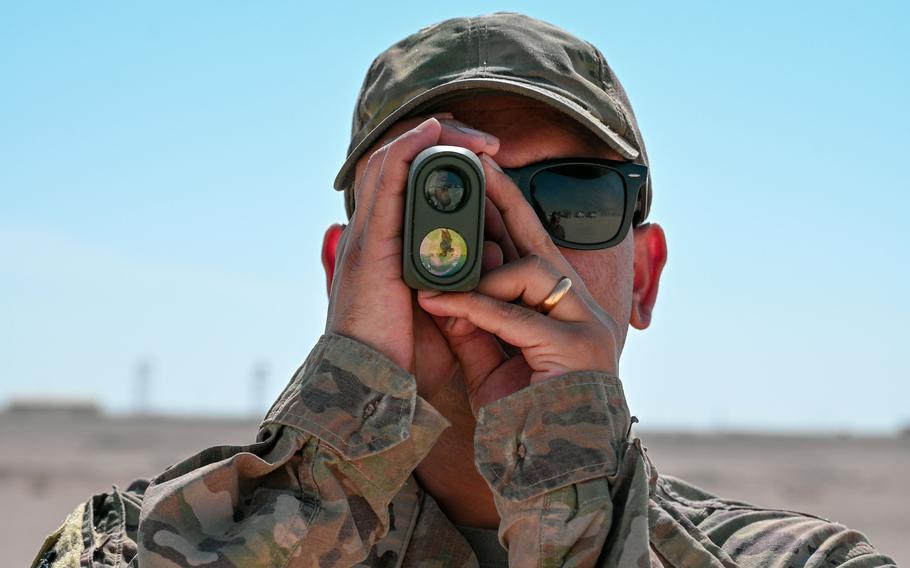
U.S. Air Force Staff Sgt. Sagar Khadka, an electrical engineer with Task Force 99, uses a range finder during a technology demonstration at Al Udeid Air Base, Qatar, Nov. 18, 2022. The task force is focused on finding the Air Force inexpensive technology solutions in the Middle East. ( Micah Coate/U.S. Air Force)
High-altitude surveillance balloons and new models of U.S. drones soon will be seen in the skies above the Middle East, the Air Force’s top general in the region said.
The Air Force’s Task Force 99 is set to begin testing this fall on the balloons as part of the unit’s rapidly expanding operations in the region, said Lt. Gen. Alexus Grynkewich, head of 9th Air Force (Air Forces Central).
The task force is about to hit “an inflection point” where the number of drones and other systems it has will begin to accelerate greatly, Grynkewich said in an interview last week.
The unit, based at Al Udeid Air Base, Qatar, has more than a dozen drones and plans to expand its roster soon, with the hope of developing an aerial network of sensors.
Grynkewich said in February that U.S. Central Command would consider high-altitude balloons as a way of closing gaps in its air defenses. Chinese high-altitude balloons have been seen over the Middle East, Grynkewich told reporters shortly after the U.S. shot down a high-altitude Chinese surveillance balloon that flew over the United States.
Task Force 99 will test how the region’s weather patterns at high altitudes affect the balloons, said Col. Robert Smoker, the unit’s commander, in an interview Tuesday.
The task force also will test ultra-long endurance fliers and stratospheric aircraft this fall. Most of the drones the group has now are small, with a range between 30 and 300 miles, Grynkewich said.
Some of the new drones will have offensive purposes, Grynkewich said.
The Air Force started Task Force 99 last fall with the goal of field-testing unmanned systems and artificial intelligence technologies in the Middle East.
U.S. Air Force officials have said many of their more traditional surveillance aircraft and drones have gone to other regions.
Grynkewich said the group aimed to be the aerial version of the Navy’s Task Force 59, which has tested commercially available, relatively inexpensive unmanned surface vessels on missions in Middle East waters since its founding in 2021.
Five partner countries provide the unit’s staff with technical experts and more may be coming on board in the next three months, he added.
The task force also in the last month tested a new software system that allowed them to create a 3D virtual reality environment based on mapping data collected by an aerial drone, Smoker said.
This 3D rendering could be used soon by ground troops for training, he said.